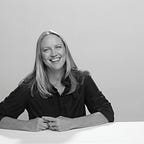The Lover of a Palestinian
Selim Nassib’s The Palestinian Lover presents the possibility of an impossible relationship: a love affair between Gold Meir and a Lebano-Palestinian banker, Albert Pharaon. Golda is in her thirties, committed to the Jewish State, Eretz Israel, and Albert is older and sanguine, and disgusted with his own class of partying and corrupt Arab aristocrats.
The novel places the characters firmly in the historical setting of a Jewish settlement supported by Great Britain in Palestine in the early 1920s, and then follows them through the initial years of immigration and strong leadership of the Jewish state, and the increasing uneasiness and unrest of the Arab population, including the Hebron Massacre in 1929; into the 1930s with British waffling on Jewish immigration into Palestine and the changes in immigration as the situation in Germany and Eastern Europe deteriorates; into the 1940s with the world’s discovery of the horrors of the Holocaust; and finally, in 1948, the establishment of the state of Israel and the beginning of a separated Palestine, one Jewish and one Arab, and the eviction of seven thousand Palestinians from Haifa and other towns newly allocated to Israel.
The novel raises the questions — without asking them outright — of cultural and religious identity and birthright: what do these concepts mean, really? Golda is in Palestine to create a Jewish state, coming from Kiev via Milwaukee, and Albert and his family have lived in the Levant, Lebanon and Palestine, for hundreds of years. Golda has a religious ancestral claim to the lands that Albert feels just as bound to through historical ancestry. Who has the superior claim? Does anyone have a birthright to land?
Albert rejects the decadence and abuses of his class and yet he embraces and supports the Arab people that are organically tied to the country they have survived on for centuries: their physical attachment to the land is “the very substance of history.” Yet he also recognizes that “Golda …was bound in that organic way to this earth. She would never leave. Come what may, her attachment to the land would be as strong as the [Arab] peasants.”
Ada, a Jewish refugee from German, is offered as a contrast. Nazi Germany has stripped her of her German identity: she feels more German than Jewish but now she must identify herself as Jewish. When fighting escalates in Palestine between the Jews and the Arabs, she chooses to leave, once again a refugee from war. Albert lets her go because he knows that “Ada had nothing to do with this country. She had not come to this land because she desired it, her destiny was not inextricably linked to that of the land.” Is Ada the lucky one, even though she was portrayed as rootless and flaky? She has no historical ties that will bind her to lands to the point of fighting for them. She would never ascribe to what Golda proclaims, looking out over a kibbutz in 1923, that “no society can survive if it refuses to sacrifice its children” (alluding to Abraham). Ada would not consider herself lucky: there is nothing she wants more than to return to Germany but the country she knew and identified herself with, is gone forever.
Identity is also examined as an exercise in choices: whom you love, whom you protect, what or whom you will fight for, will define who you are, and even more so than your ancestral identity. Both Albert and Golda are stalwart in support of their loves, but for Golda the beloved is a state, and an ideal; for Albert his beloved are certain and specific people, including Golda.
Written without diatribe or anger or condescension, this novel is a quiet and deep exploration of identity. When self-identity is bound up with land — as in the lands of Israel and Palestine — the fierceness of attachment to that land creates bonds that make hostages out of everyone living there. Can a release be negotiated? Nassib does not try to answer that question but he ends with Golda visiting Albert in a dream: “She is looking through him, he has become transparent. He is afraid, she is so real. She is still talking, he cannot concentrate anymore, but who is she talking to?”
The Palestinian Lover was translated by Alison Anderson.
